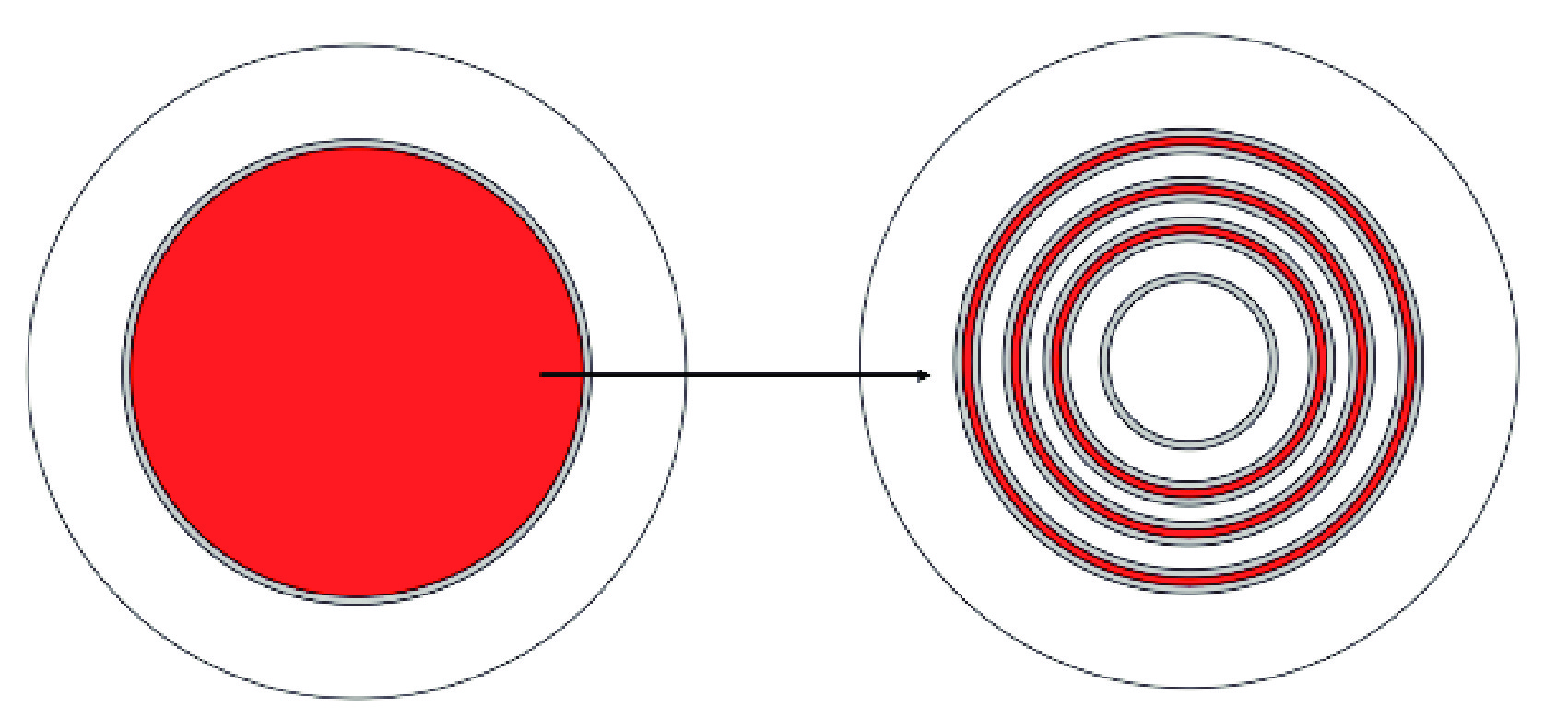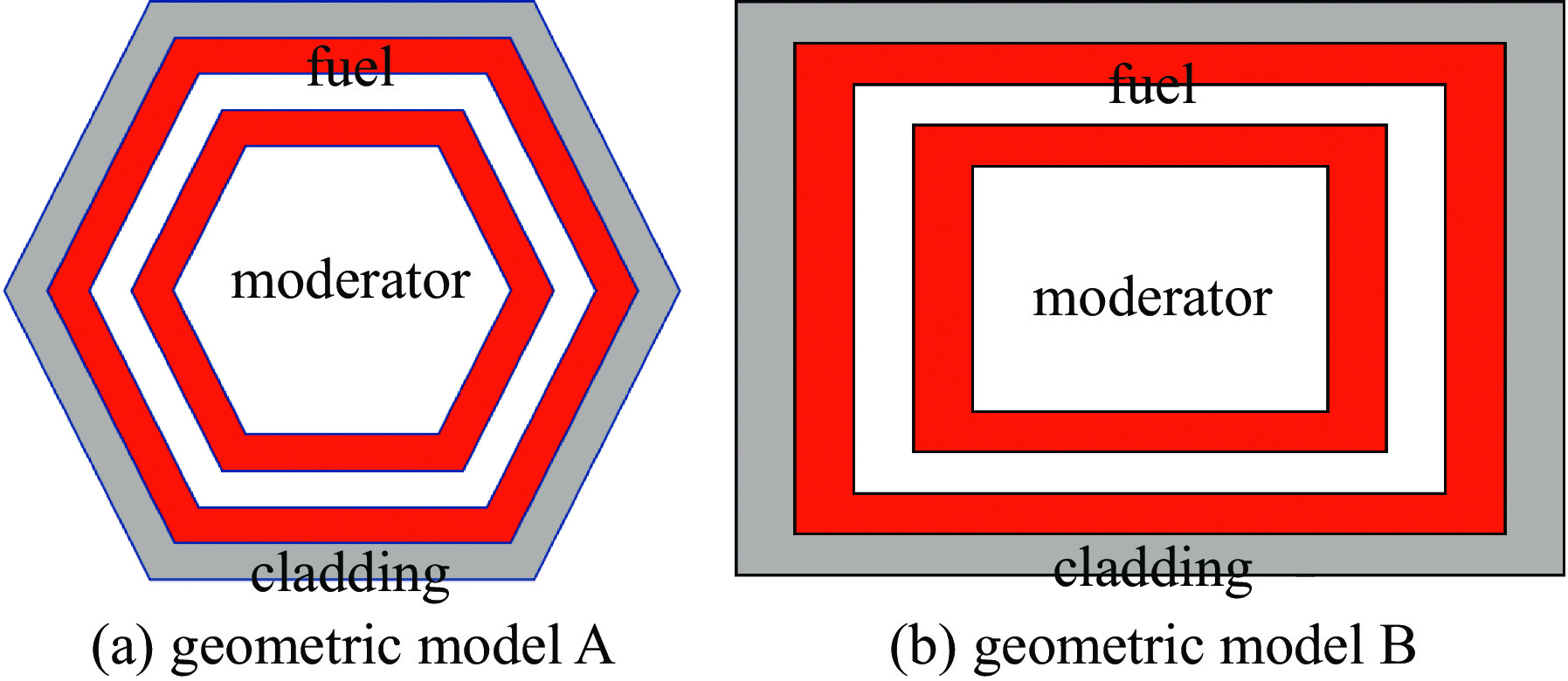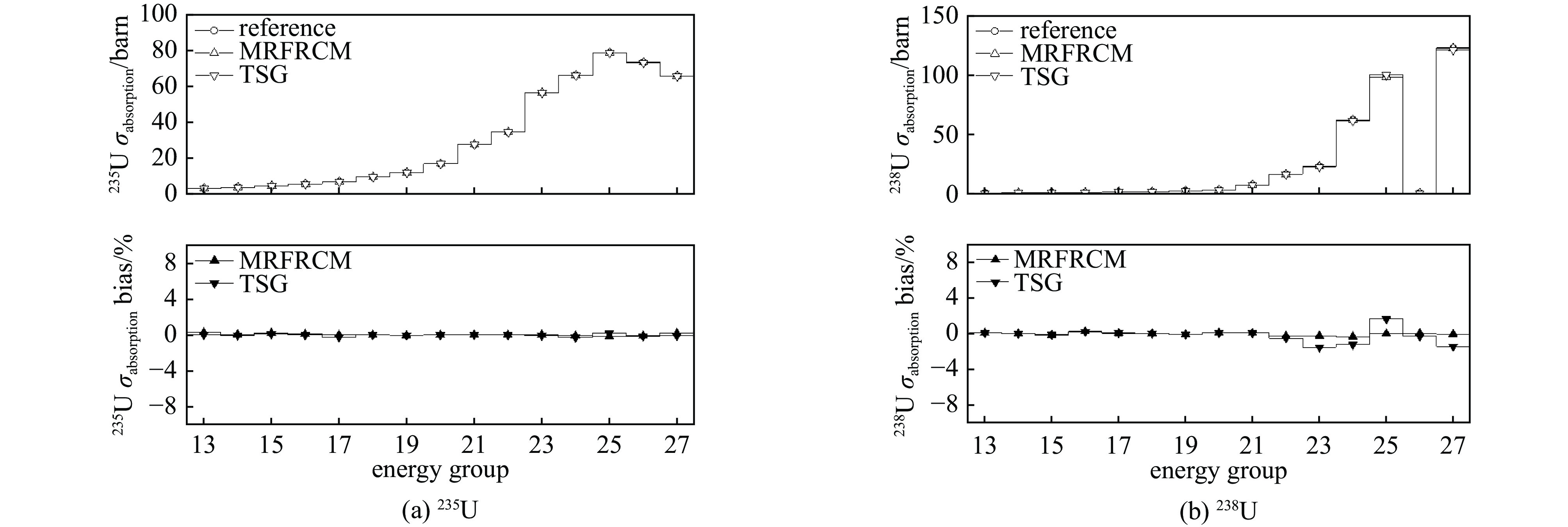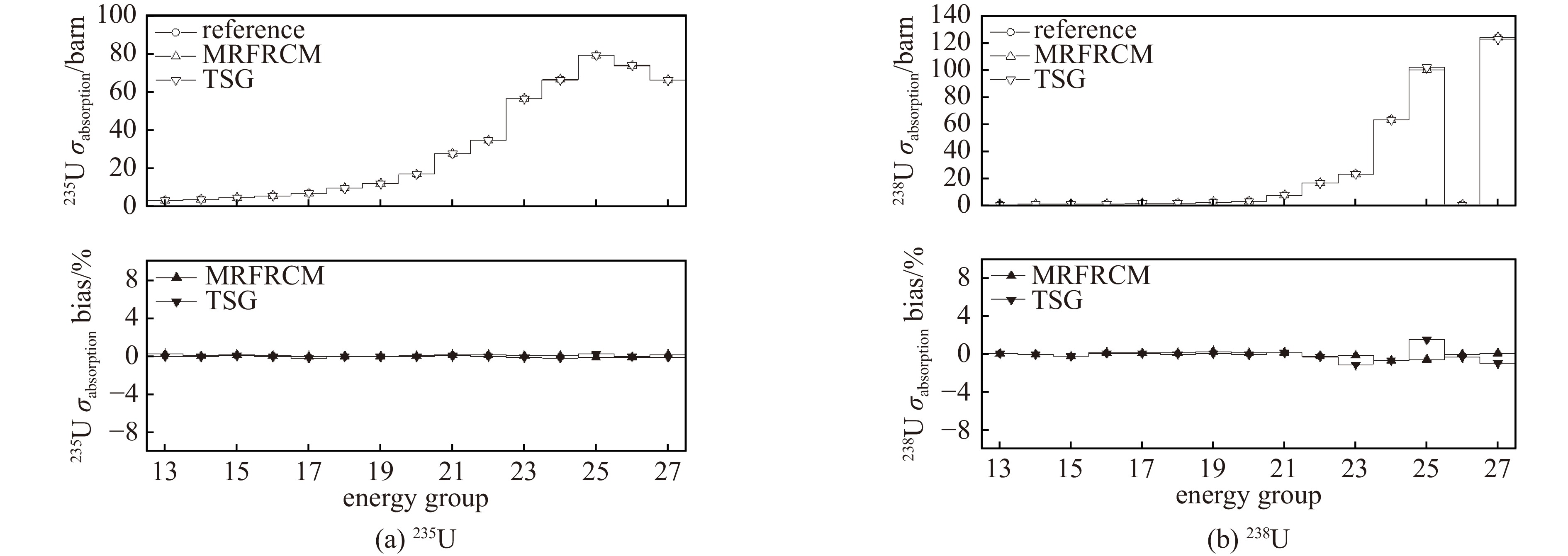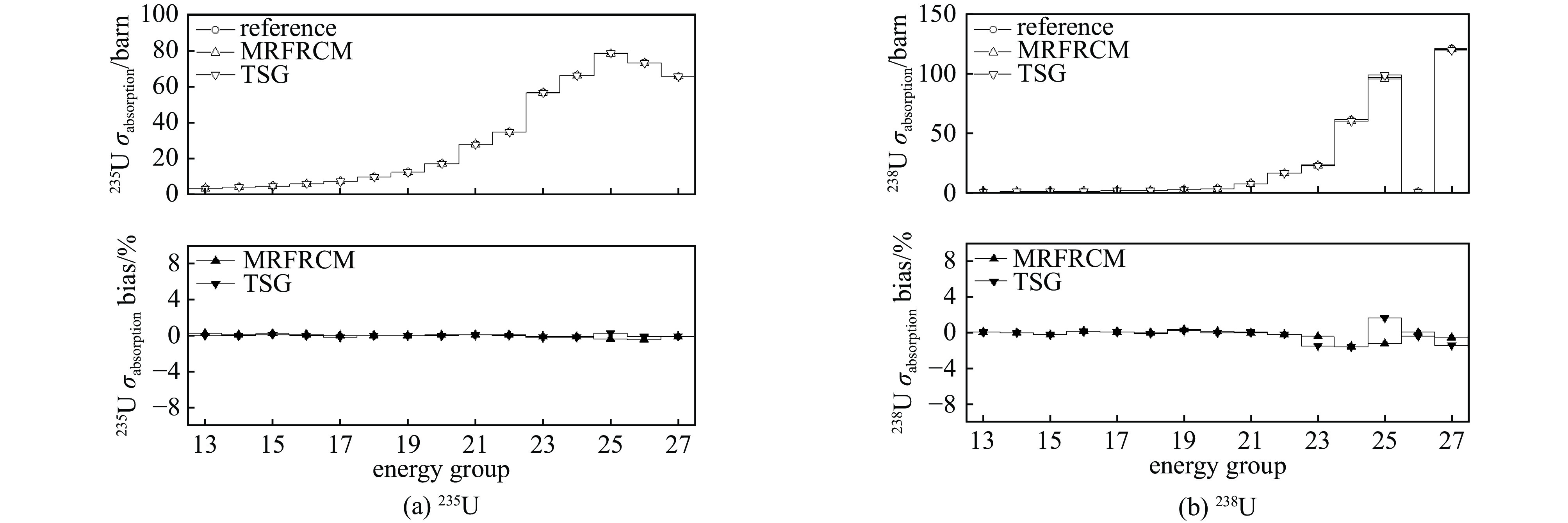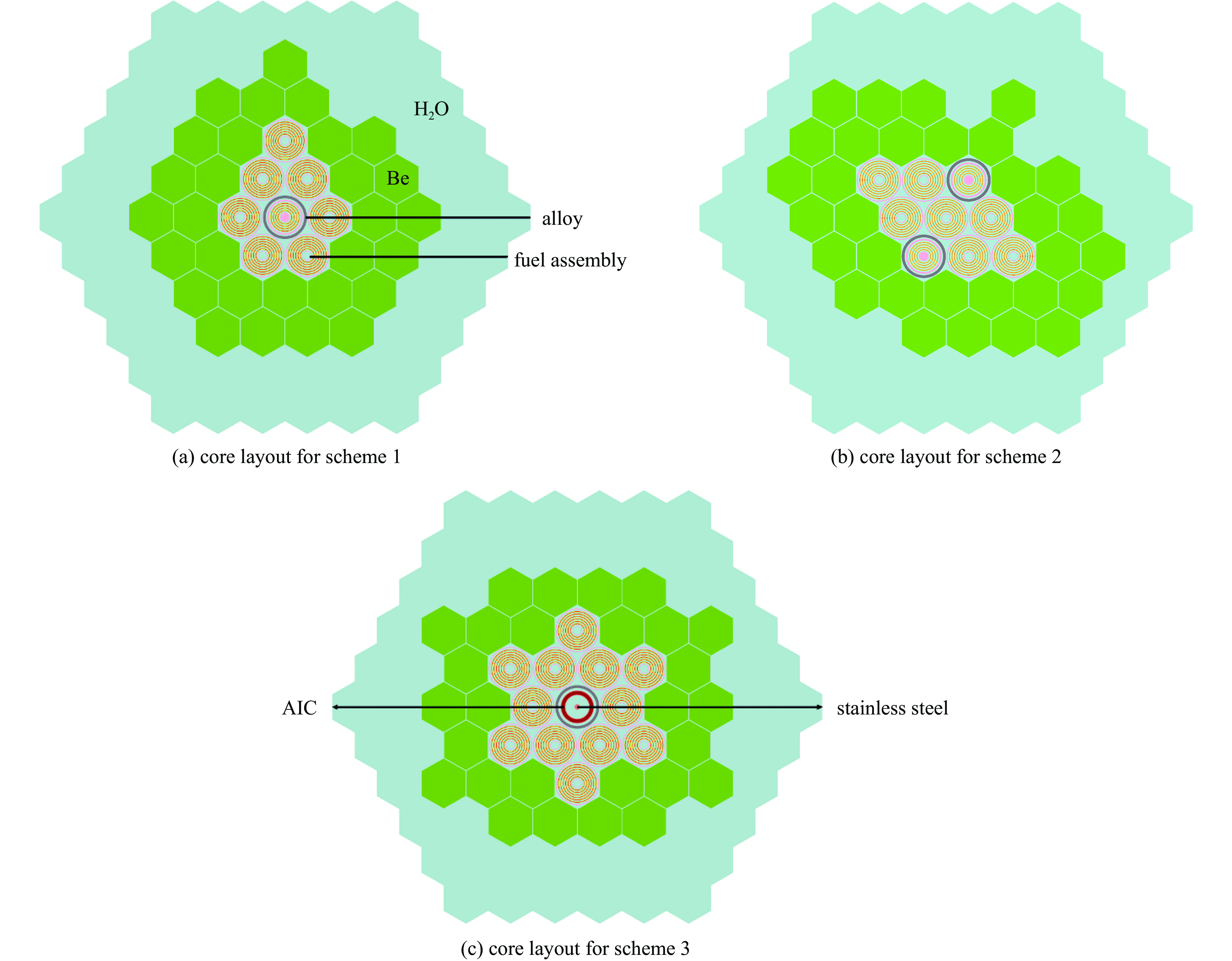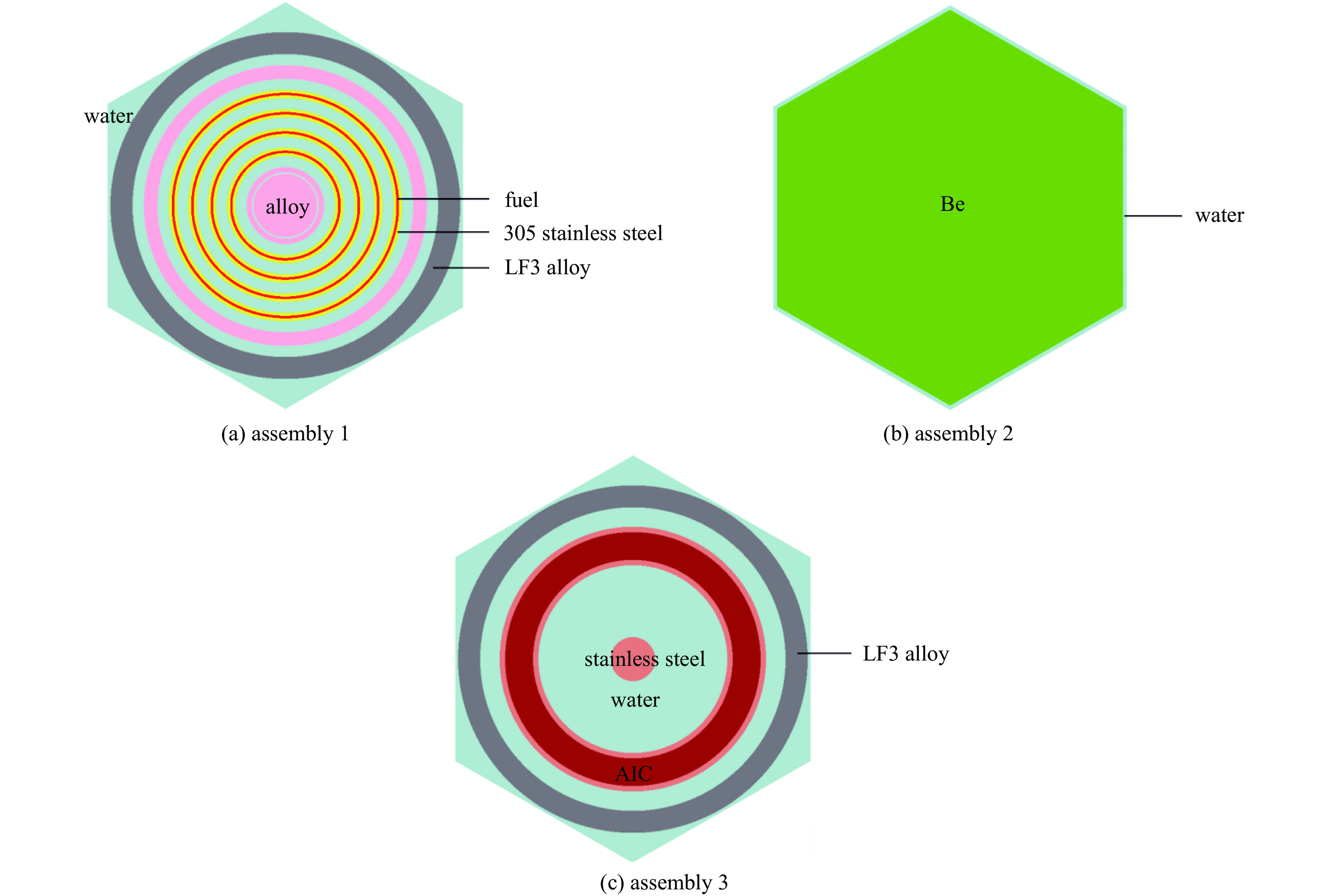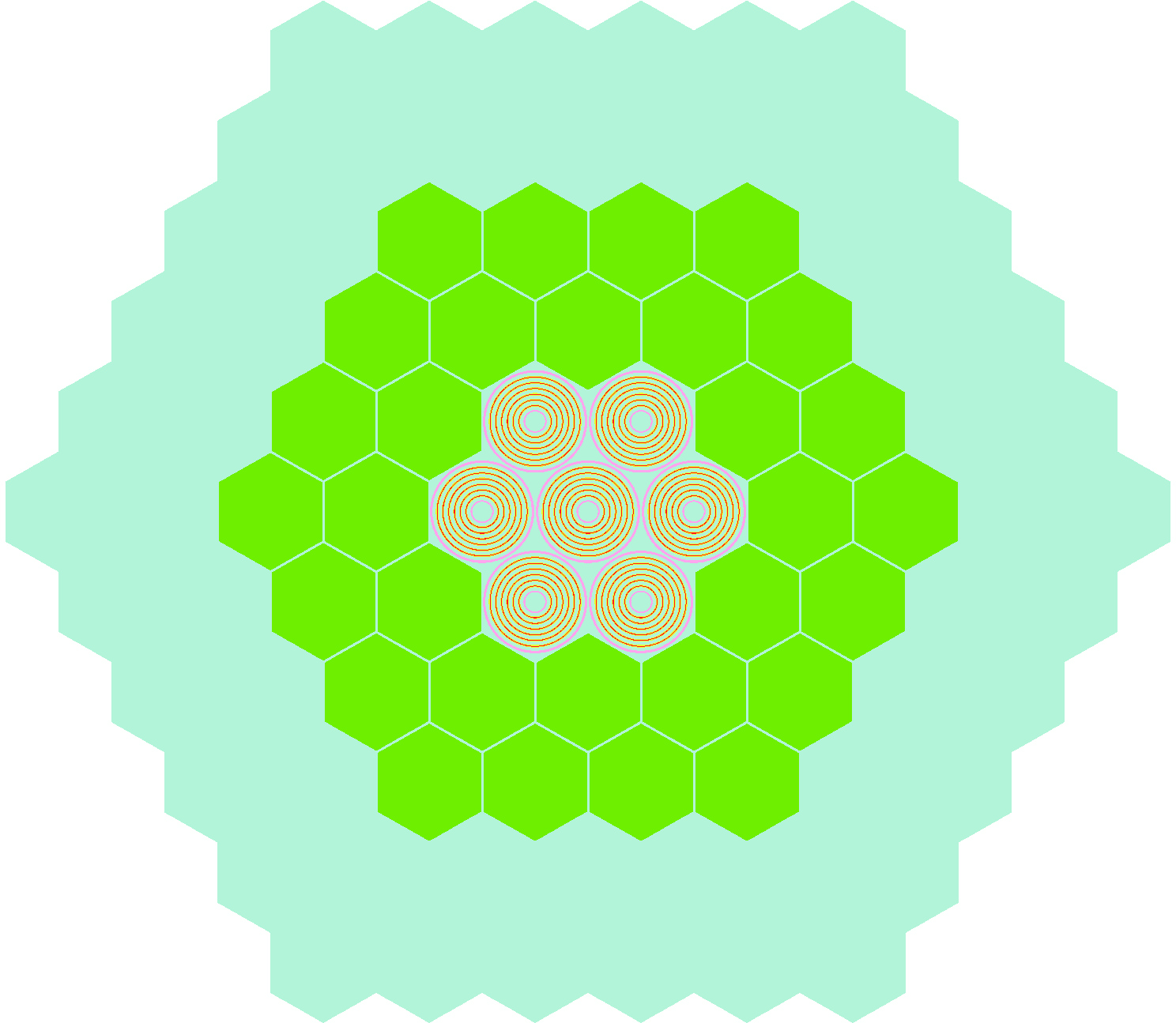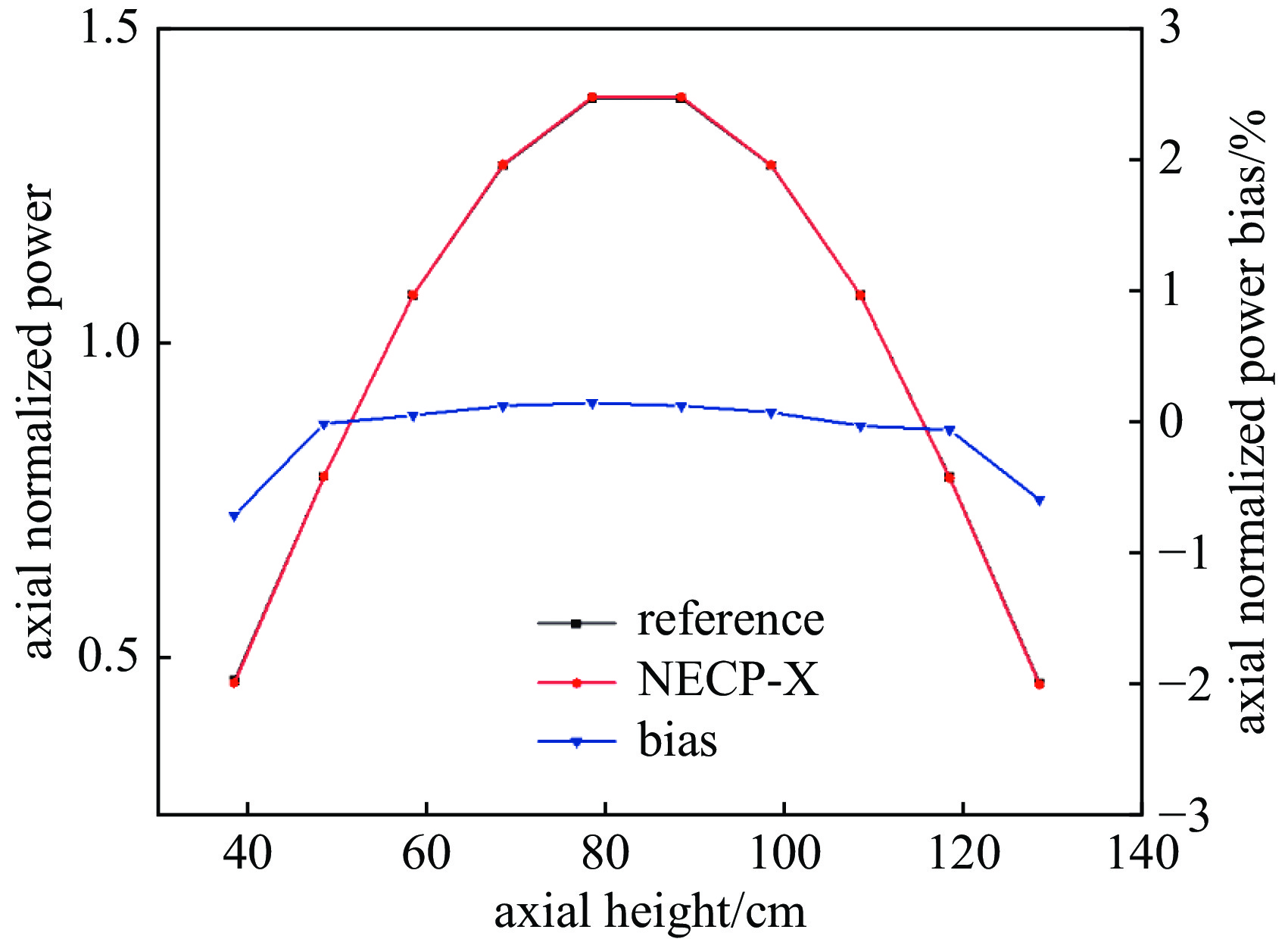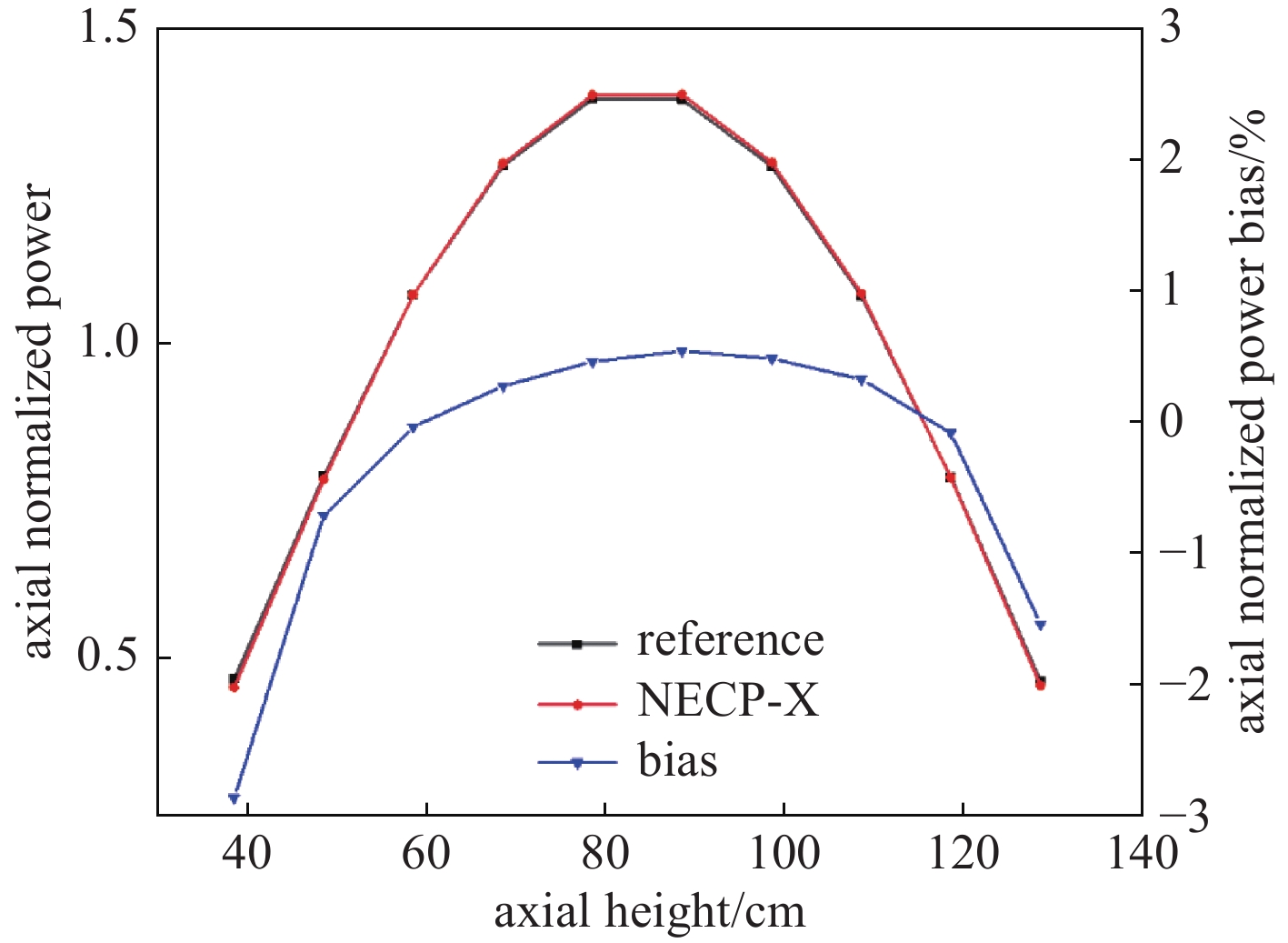Research and verification on calculation method of multi-ring fuel resonance
-
摘要: 针对多环燃料精确共振计算的难题,提出并建立了基于全局局部耦合的多环燃料共振计算方法,其中局部计算中采用超细群方法求解共振核素有效自屏截面。采用多环燃料组件问题对该共振计算方法的精度、效率进行了评估,并进一步将该方法应用于高通量工程试验堆二维和三维全堆芯问题分析中。结果表明:基于全局局部耦合的多环燃料共振计算方法在精度和效率上都比传统子群方法更好;采用全局局部耦合的多环燃料共振计算方法模拟全堆芯问题中,特征值、功率分布均与参考解吻合较好。Abstract:
Background Accurate resonance calculation for multi-ring fuel elements remains a significant challenge in reactor physics due to the complex spatial self-shielding effects and strong mutual interference between resonant nuclides. Traditional resonance methods, such as the subgroup method, often struggle to achieve a balance between computational efficiency and accuracy when dealing with such configurations. This is particularly critical for high-fidelity analysis of advanced reactors and experimental facilities like the high-flux engineering test reactor, where precise characterization of resonance phenomena is essential for predicting core performance and safety parameters.Purpose This study aims to address the limitations of existing resonance calculation methods for multi-ring fuel systems by developing a novel global-local coupling framework. The primary objectives are to enhance the accuracy of effective self-shielding cross-section computation for resonant nuclides, improve computational efficiency, and validate the method’s applicability for both assembly-level and full-core simulations.Methods A multi-ring fuel resonance calculation method based on the global-local coupling method (MRFRCM) was proposed specifically for multi-ring fuel analysis. In this approach, when handling global spatial effects, the entire multi-ring fuel is treated as an integrated black body. This process simplifies the multi-ring fuel problem into an equivalent rod-type fuel problem for calculating the global Dancoff correction factor. Subsequently, an equivalent one-dimensional local problem is established through a conservation-based search of the Dancoff correction factor. Finally, the problem is reverted to a one-dimensional multi-ring fuel configuration, where the ultra-fine group method is employed to obtain precise self-shielding cross-sections. The method was implemented and tested on multi-ring fuel assembly problems to evaluate its precision and efficiency. Furthermore, it was applied to two-dimensional and three-dimensional full-core models of a high-flux engineering test reactor to assess its performance in practical scenarios.Results The proposed method demonstrated superior accuracy and computational efficiency compared to the traditional subgroup method. In assembly-level calculations, the global-local approach reduced errors in effective cross-section estimation while maintaining competitive computation times. For full-core simulations, the results showed good agreement with reference solutions. The method also exhibited robust performance in handling complex geometries and heterogeneous material configurations.Conclusions The MRFRCM provides an effective solution for high-accuracy resonance modeling in multi-ring fuel systems. It significantly outperforms the traditional subgroup method in both precision and efficiency, making it suitable for large-scale reactor physics applications. The successful application to 2D and 3D full-core analyses confirms its practicality and reliability for simulating high-fidelity reactor core behavior. Future work will focus on extending the method to broader energy ranges and more complex reactor types. -
表 1 单环燃料栅元问题特征值及偏差结果
Table 1. Eigenvalue and bias results for single-ring fuel cell problem
method eigenvalue bias/10−5 calculation time/s reference 1.72257 ±2.0×10−5/ / MRFRCM 1.72300 43 2.38 TSG 1.72300 43 426.72 表 2 高通量工程试验堆不同堆芯布置方案二维全堆特征值计算结果
Table 2. Eigenvalue and bias results for different two-dimensional core layout schemes of HFETR
scheme reference keff NECP-X keff bias/10−5 scheme 1 1.04074 ±2.0×10−51.04177 103 scheme 2 1.03544 ±4.0×10−51.03784 240 scheme 3 1.03091 ±2.0×10−51.03066 −25 表 3 高通量工程试验堆不同堆芯布置方案三维全堆特征值计算结果
Table 3. Eigenvalue and bias results for different three-dimensional core layout schemes of HFETR
scheme reference keff NECP-X keff bias/10−5 scheme 1 1.00131 ±2.0×10−51.00102 −29 scheme 4 1.00109 ±4.0×10−51.00096 −13 -
[1] 张乾. 基于等价理论的先进共振自屏计算方法研究[D]. 西安: 西安交通大学, 2016Zhang Qian. Research on resonance self-shielding calculation method based on equivalence theory[D]. Xi’an: Xi’an Jiaotong University, 2016 [2] Tebin V V, Yudkevich M S. Generalized subgroup approach to calculating the resonant absorption of neutrons[J]. Soviet Atomic Energy, 1985, 59(2): 639-645. doi: 10.1007/BF01122481 [3] Ishiguro Y, Takano H. PEACO: a code for calculation of group constant of resonance energy region in heterogeneous systems[R]. Tokyo: Japan Atomic Energy Research Institute, 1971. [4] 张滕飞, 朱磊, 吴宏春, 等. 高通量堆燃料管理平台HEFT的研发与验证[J]. 原子能科学技术, 2013, 47(s2): 467-471Zhang Tengfei, Zhu Lei, Wu Hongchun, et al. Development and validation of high flux engineering test reactor fuel management platform HEFT[J]. Atomic Energy Science and Technology, 2013, 47(s2): 467-471 [5] Chen Jun, Liu Zhouyu, Zhao Chen, et al. A new high-fidelity neutronics code NECP-X[J]. Annals of Nuclear Energy, 2018, 116: 417-428. doi: 10.1016/j.anucene.2018.02.049 [6] 曹璐, 刘宙宇, 曹良志, 等. 基于NECP-X程序的三维复杂几何小型压水堆全堆芯一步法计算[J]. 核动力工程, 2018, 39(s2): 92-97Cao Lu, Liu Zhouyu, Cao Liangzhi, et al. One step whole core calculation of 3D complex geometrical small PWR based on NECP-X[J]. Nuclear Power Engineering, 2018, 39(s2): 92-97 [7] 徐宁, 祖铁军, 曹良志, 等. NECP-Atlas程序中多群光子核数据处理模块的开发与验证[J]. 现代应用物理, 2021, 12: 010203Xu Ning, Zu Tiejun, Cao Liangzhi, et al. Development and verification of multi-group photon nuclear data processing modules in NECP-Atlas[J]. Modern Applied Physics, 2021, 12: 010203 [8] Liu Zhouyu, He Qingming, Zu Tiejun, et al. The pseudo-resonant-nuclide subgroup method based global–local self-shielding calculation scheme[J]. Journal of Nuclear Science and Technology, 2018, 55(2): 217-228. doi: 10.1080/00223131.2017.1394232 [9] 曹璐, 刘宙宇, 张旻婉, 等. NECP-X程序中基于全局-局部耦合策略的非棒状几何燃料共振计算方法研究[J]. 核动力工程, 2021, 42(1): 204-210Cao Lu, Liu Zhouyu, Zhang Minwan, et al. Resonance calculation method for non-rod-type fuel in NECP-X based on global-local coupling method[J]. Nuclear Power Engineering, 2021, 42(1): 204-210 [10] 曹璐, 李达, 刘宙宇, 等. NECP-X中环形燃料共振计算方法及在西安脉冲堆的应用[J]. 现代应用物理, 2025, 16: 04001Cao Lu, Li Da, Liu Zhouyu, et al. The annular fuel resonance calculation method in NECP-X and its application to Xi’an pulse reactor[J]. Modern Applied Physics, 2025, 16: 04001 [11] Liu Zhouyu, Zhao Chen, Cao Lu, et al. The material-region-based 2D/1D transport method[J]. Annals of Nuclear Energy, 2019, 128: 1-11. doi: 10.1016/j.anucene.2018.12.025 [12] Zhao Chen, Liu Zhouyu, Ma Dangwei, et al. The iteration and parallel strategy for the 2D/1D transport method in NECP-X[C]//Proceedings of the International Conference on Mathematics & Computational Methods Applied to Nuclear Science &Engineering. 2017. [13] Wen Xingjian, Liu Zhouyu, Chen Jun, et al. Development and validation of the depletion capability of the high-fidelity neutronics code NECP-X[J]. Annals of Nuclear Energy, 2020, 138: 107096. doi: 10.1016/j.anucene.2019.107096 [14] Liu Zhouyu, Wang Bo, Zhang Minwan, et al. An internal parallel coupling method based on NECP-X and CTF and analysis of the impact of thermal-hydraulic model to the high-fidelity calculations[J]. Annals of Nuclear Energy, 2020, 146: 107645. doi: 10.1016/j.anucene.2020.107645 [15] 王博, 刘宙宇, 陈军, 等. 基于NECP-X程序的C5G7-TD系列基准题的计算与分析[J]. 核动力工程, 2020, 41(3): 24-30Wang Bo, Liu Zhouyu, Chen Jun, et al. Calculation and analysis of C5G7-TD benchmark based on NECP-X whole core transport transient solutions[J]. Nuclear Power Engineering, 2020, 41(3): 24-30 [16] 张旻婉, 刘宙宇, 温兴坚, 等. 用NECP-X程序计算与分析VERA 9#基准题[J]. 现代应用物理, 2021, 12: 010212Zhang Minwan, Liu Zhouyu, Wen Xingjian, et al. Simulation and analysis of VERA benchmark problem 9# based on NECP-X code[J]. Modern Applied Physics, 2021, 12: 010212 [17] 李志峰, 李帆, 赵常有, 等. 基于一步法的重反射层反应堆启动物理试验控制棒价值校核计算研究[J]. 现代应用物理, 2024, 15: 010405Li Zhifeng, Li Fan, Zhao Changyou, et al. Check calculation of control rod worth for the start up physics test in reactor with heavy reflector based on one-step method[J]. Modern Applied Physics, 2024, 15: 010405 [18] 杨文华, 赵国正, 张亮, 等. 高通量工程试验堆辐照试验能力和辐照试验技术[J]. 核科学与工程, 2018, 38(6): 986-994Yang Wenhua, Zhao Guozheng, Zhang Liang, et al. Irradiation testing capabilities and irradiation testing technology of the HFETR[J]. Nuclear Science and Engineering, 2018, 38(6): 986-994 [19] 彭钢. 三维堆芯连续能量蒙特卡罗程序用于HFETR零功率物理实验计算分析研究[J]. 核动力工程, 2012, 33(6): 127-131,138Peng Gang. Analysis on zero power experiment of high flux engineering test reactor with three-dimensional continuous energy Monte Carlo code[J]. Nuclear Power Engineering, 2012, 33(6): 127-131,138 -




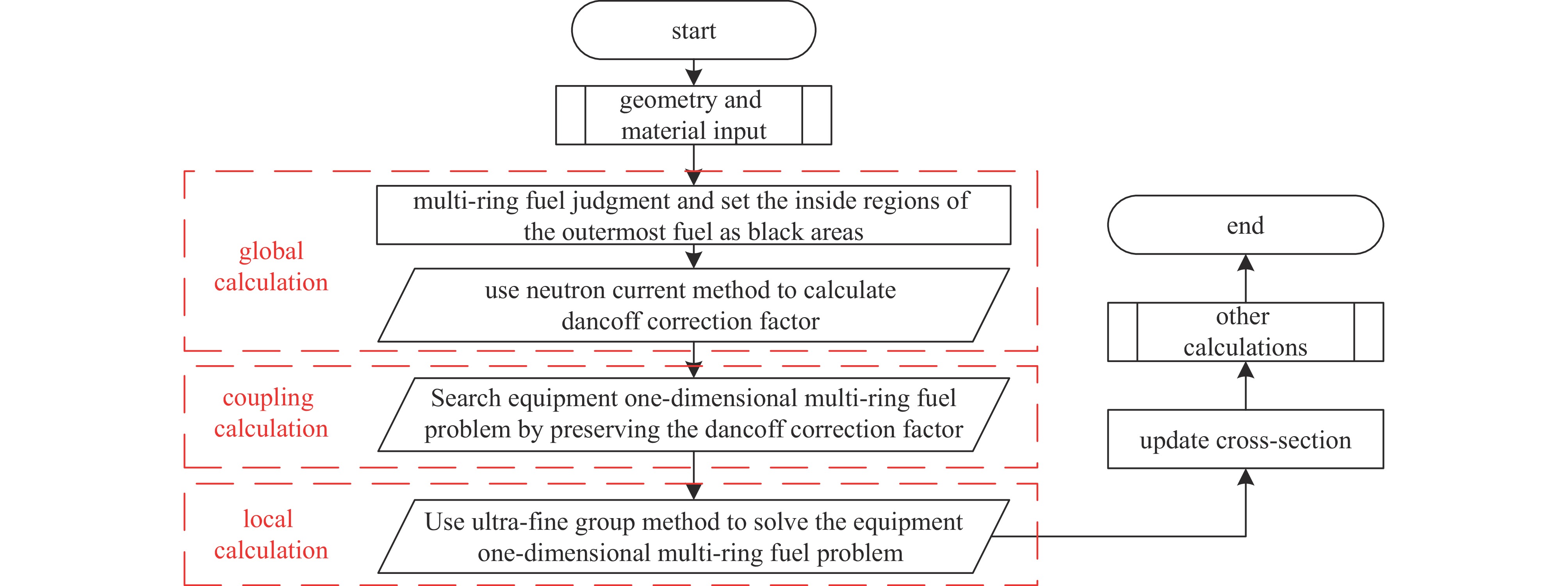
 下载:
下载:


